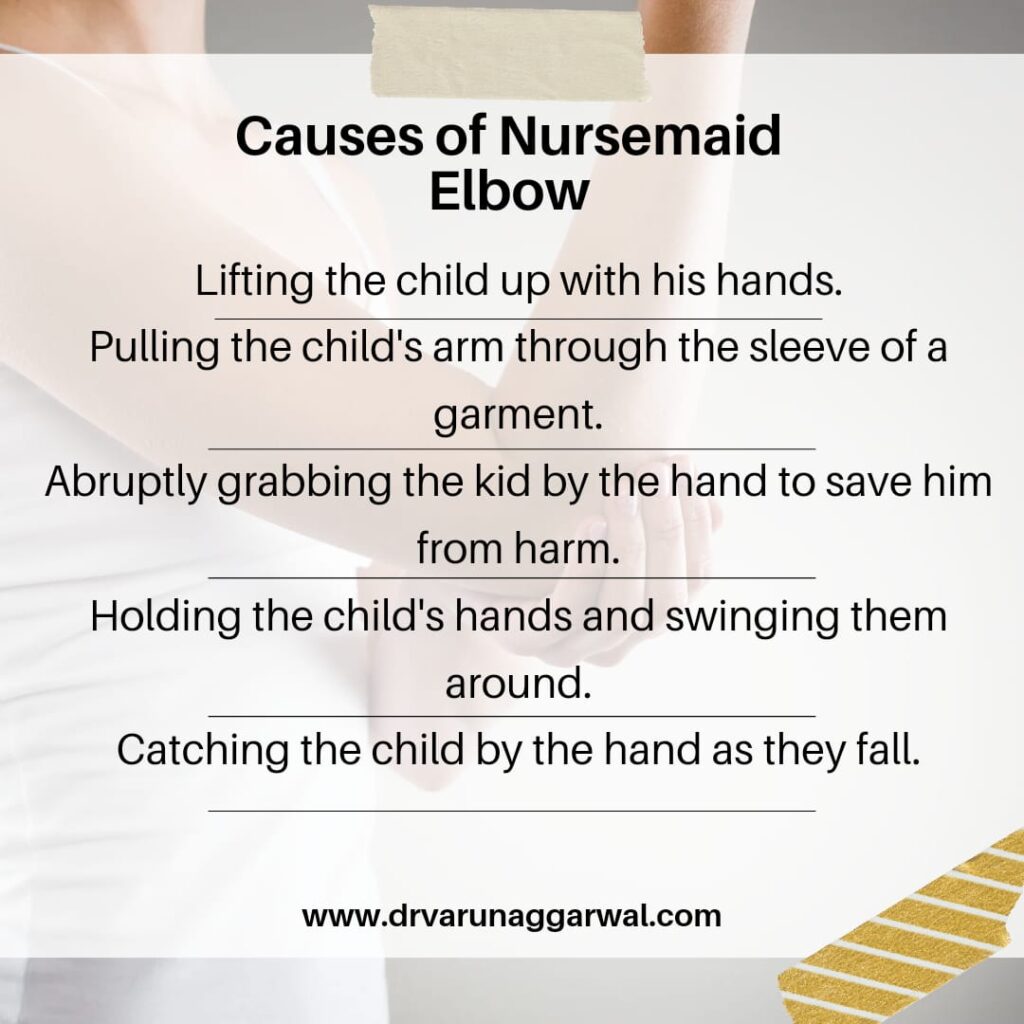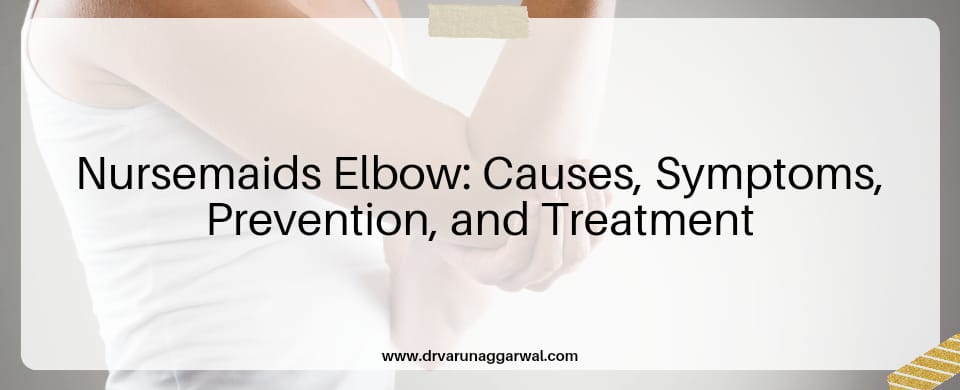Nursemaid’s elbow is a common injury that occurs in childhood. Sometimes this is referred to as a “pulled elbow” because it occurs when a child’s elbow is pulled and partially displaced. In medical terms, this injury is named “radial head subluxation”.
The bones and ligaments of a young child are typically soft and in the development stage. This makes sustaining such injuries simple. Children between the ages of 1 and 4 are most frequently affected by nursemaid elbow, while it can also affect slightly older children.
In this blog, you will know about the symptoms, causes, prevention, and treatment of nursemaid elbow.

Causes of Nursemaid Elbow
A young child’s elbow joint can be dislocated with even a small amount of force. The major causes of nursemaid elbow are as follows:-
- Lifting the child up with his hands
- Pulling the child’s arm through the sleeve of a garment.
- Abruptly grabbing the kid by the hand to save him from harm.
- Holding the child’s hands and swinging them around.
- Catching the child by the hand as they fall.
What are the symptoms of Nursemaid Elbow?
Here is the list of symptoms that indicates Nursemaid Elbow:
- Pain is the primary sign of a Nursemaid elbow. In most cases, the child will keep the hurt arm by their side and not move it to minimise pain.
- Cries or indicates discomfort after being pulled by the arms or hands.
- Avoids moving their arm below the shoulder.
- Uses the other hand to support the injured arm.
- Refuses to rotate their palm.
- Hold their arm close to their body, straight or slightly bent.
How to prevent Nursemaid Elbow?
Parents need to be aware that a nursemaid elbow is likely to recur if it occurs once. The parents and caregivers can take the below steps to prevent an injury from occurring or recurring.
- Lift a child safely by holding gently under the arms.
- Never hold a child’s hands or arms while swinging them.
- Make sure you do not pull or tug on the hands or arms of a child.
The treatment for Nursemaid Elbow
In some cases, the ligament unsticks on its own. However, in most cases, a health care professional performs a gentle arm movement called a reduction to free the ligament from between the two bones. During the procedure, the child sits on a parent’s lap while the doctor moves the arm, which takes only a few seconds.
As the joint returns to its original position, you may hear a “pop.” Children may feel a little uneasy at first, but they soon feel much better. Most kids regain full arm function in 5 to 15 minutes. Some injuries could require more than one reduction to heal properly.Sometimes a child who has had a reduction may not want to use the arm because they fear it might hurt.
If the patient is in pain, the doctor may place the arm in a sling and prescribe acetaminophen or ibuprofen. A splint (partial cast) or sling may be placed on the arm until a specialist can examine it after a few days.
Click here to contact for more information


